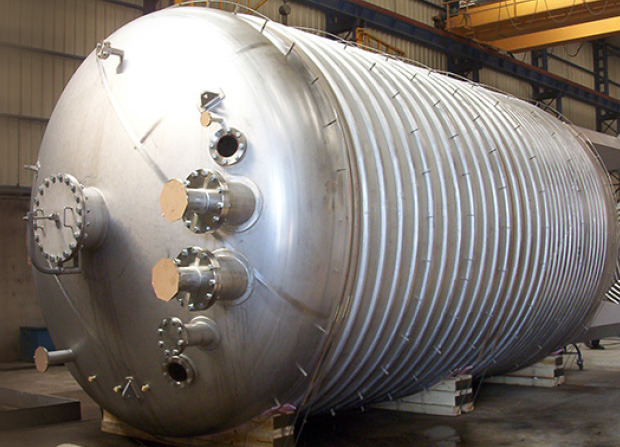
A chemical reactor is a process vessel in which a chemical reaction takes place. Chemical engineers design reactors to maximize net present value for a given reaction.
Reactor dimensions have a large impact on the rate of reaction and mixing. For example, taller equipment requires less energy for agitation than shorter machinery.
Tanks
Chemical reactors for sale are used for mixing liquids and causing chemical reactions as part of a wide variety of manufacturing processes. To make sure that these reactions take place in a controlled way, it’s important to have the right tank for the job. In addition to ensuring that the liquids don’t leak or spill, the tank should also be sturdy enough to withstand the chemicals involved in the reaction. The type of tank used depends on the reaction, the conditions required, and the volume involved.
Many different types of tanks are available for use in industrial chemical reaction applications, including storage, settling and processing vessels. These tanks come in a wide range of shapes and sizes, from small to large. They can be made of carbon steel, stainless steel, and nickel alloys, and can be designed for both internal and external pressure. They can also be manufactured with a variety of weld finishes, from mill sheet and plate to a polished 320 grit surface and a sanitary or corrosion-resistant finish.
Typically, a continuous stirred tank reactor is used for mixing the reagents in a chemical reaction. In this process, the reagents enter the reactor and are mixed by an impeller. This ensures that all of the reagents are thoroughly combined. This process varies from tubular reactors, in which fluid reagents flow through a pipe and transform into products.
Pipes
The piping system in chemical reactors is essential for conveying the product. It should be sized according to the specific needs of the process. In addition, it should be able to accommodate the required pressure and temperature levels. The size of the piping should also take into account the capacity of the reactor itself and the space available in the facility. The piping should be sized to ensure the proper flow rate and allow for a quick shutdown in case of an emergency.
The size of a pipe depends on the number and size of the connected pumps, feed exchangers, heaters, etc. These factors can determine the overall cost of a project. In general, larger pipes are more expensive than smaller ones. This is because large pipe systems require more complex pumps and a higher amount of piping material.
While batch used reactors are most common, continuous processes are also used in the production of chemicals. For example, a water-softener uses a continuous reactor that passes hard water through an ion-exchange resin. The result is soft water that pours out of the exit.
These types of reactors require a more detailed understanding of the physics involved in fluid flow, mass transfer, and reaction kinetics. This will enable engineers to design a chemical reactor that is suitable for the application in question. In addition, they can help to improve the performance of the chemical process and increase product yields.
Half-coil jackets
A half-coil jacket is a secondary enclosure that wraps around the shell of a reactor vessel. It consists of a welded half pipe that creates a semi circular flow channel for the heat transfer fluid. Unlike a single jacket, it has no butt welds, which makes it more durable. The jacket can be heated or cooled to control the process. The helix shape of the half pipe also improves mixing in a reactor.
When scaling up a chemical industrial reactors from the lab to pilot or production, it is important to understand how the size of a batch reactor impacts the local reactions and mixing conditions. These factors can dramatically change the yield for a given reactor size. It is important to use a model or simulation to understand the physics of the reactor and its flows to avoid inaccurate size estimates.
The selection of a mixer is critical to the successful operation of a chemical reactor. There are many different types of mixers, so it is important to select one that is appropriate for your application. A quality mixer will ensure that all reactants are thoroughly mixed, allowing the chemical reaction to progress smoothly.
Reactor kettle is the main chemical react production equipment, it is widely used in resins, adhesives, paint, cosmetics, pharmaceutical and other chemical industry. The device mainly consists of the body vessel, gears, mixing devices, heating devices, cooling devices, and sealing composition.
Thermocouples
Thermocouples are the most common temperature sensors used in chemical processes. They use the Seebeck effect to measure temperature differences between two dissimilar metals bonded together and a reference junction held at a constant temperature. They have a high sensitivity, and can be used in applications where large temperature differences need to be measured. They also have a long life, and are highly durable.
Typical multipoint thermocouple probes require mounting hardware, which adds to the instrument’s spatial footprint. New cable probe technology allows for more flexible design, and significantly reduces the number of required support elements. This reduces failure vulnerabilities, and enables the probes to be more tightly packed in catalyst beds, improving mix-through and product yield.
These probes are designed to withstand the high temperatures encountered in chemical buy reactors. They are made of high-tensile strength materials that can withstand the pressure from the reactions inside the reactors. They also have a welded seam that ensures a leak-proof seal and prevents the leaking of liquid from the seam.
Thermocouples are ideal for measuring over a wide range of temperatures, from -270 to 3000 degC. However, they are less suitable for measuring small temperature differences with high accuracy. For these applications, thermistors and silicon bandgap temperature sensors are more appropriate. However, thermocouples are still the most popular temperature sensors in the industry, and have become the standard for many applications.
